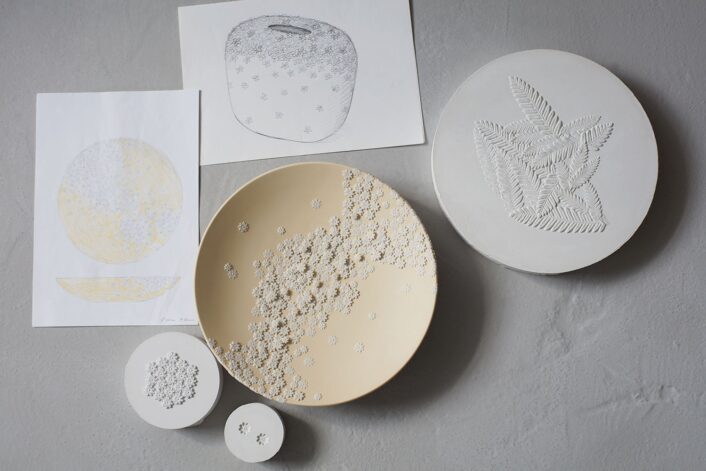Design
Wedgwood’s Black Basalt
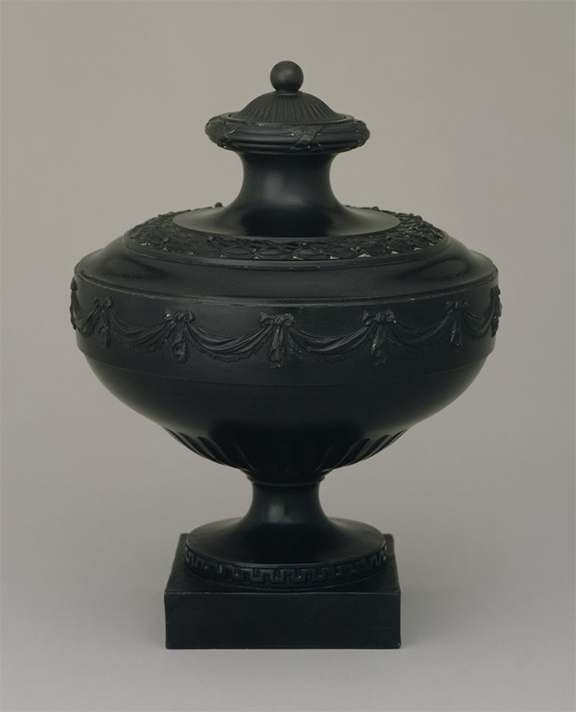
Adding manganese helped achieve the richest color.
Image courtesy of: Collecting Wedgwood
In 1786, Josiah Wedgwood developed Black Basalt. This was the ebony stoneware that was created in order to mimic ancient bronze which was extremely coveted. Through the process of firing reddish-brown clay at high temperatures, the pieces were completed with an inky matte finish.
Black Basalt became very successful commercially. After it was initially introduced, the factory had a hard time keeping up with the high demand.
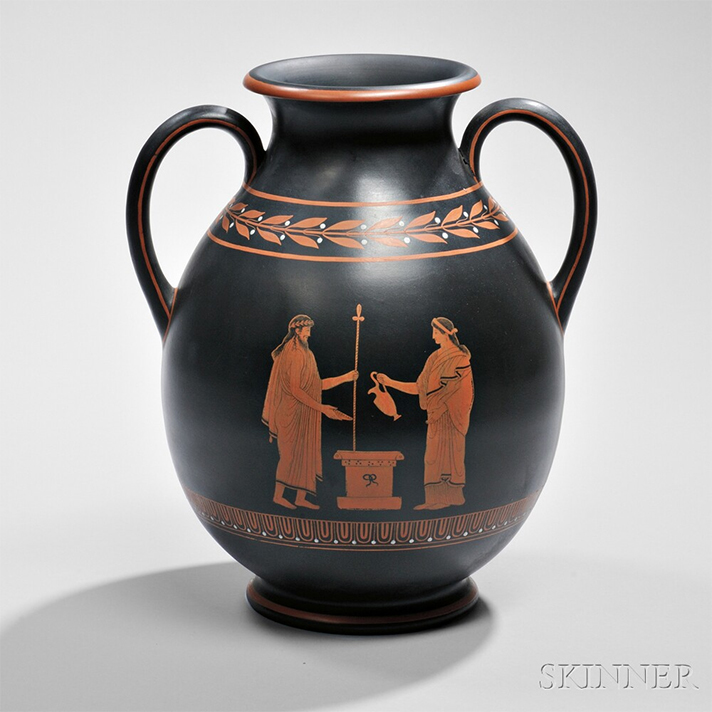
From the 19th-century, a bulbous-shaped vase with two loop handles. Two central figures tell a story, and there is banding near both the top and bottom of the piece. Dimensions: 12.5″ h.
Obviously, Wedgwood greatly admired “Etruscan” vase forms and emulated them in both shape and decoration.
Image courtesy of: Skinner, Inc.
The collection included cameos, seals, gems, and intaglios. The black salt strengthened the material and thus, the manufacturer was able to have more versatility. With the addition of this element, it was possible to produce library busts, candlesticks, and vases.
Similar to Wedgwood’s regular porcelain pieces, hand-painting was another great innovation and encaustic enamels were used to copy classic Etruscan pottery designs.
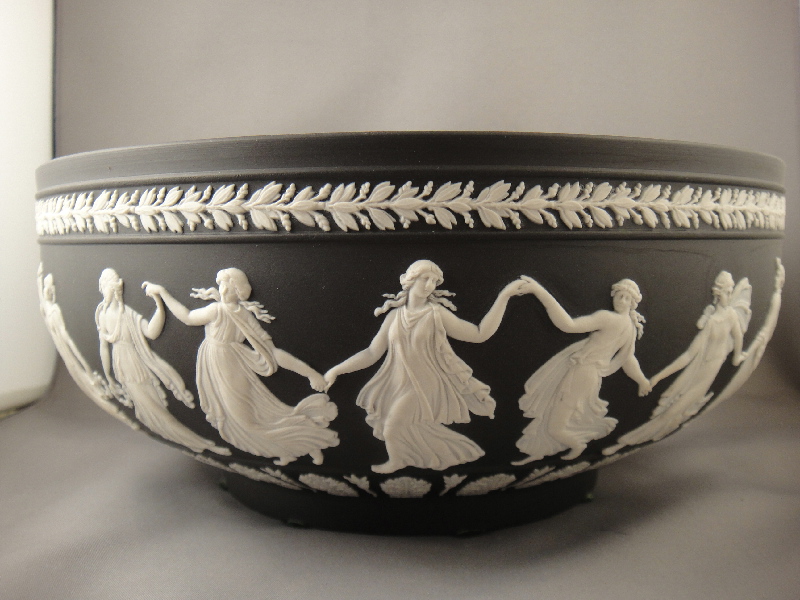
“Dancing Hours Jasperware Bowl”. Dimensions: 4.5″ (height) x 10″ (diameter)
Image courtesy of: City Creek Antiques
Prior to Wedgwood’s innovation, creative English potters used material that was found in the ground around local coal deposits to make “Egyptian Black”. Josiah Wedgwood transformed the Staffordshire stoneware by adding manganese to obtain a richer black.
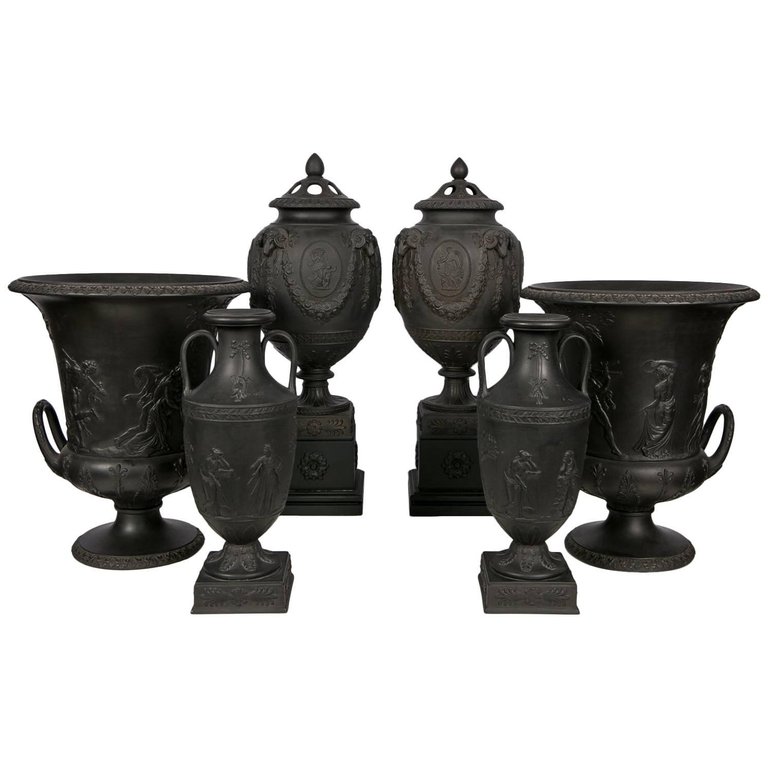
A six piece collection that was recently for sale at an auction.
Image courtesy of: 1st Dibs
The Black Basalt pieces were based on Roman, Greek, and Etruscan originals which fit perfectly with the neo-classical style that was “all the rage” for interior design in the 1770s. For decoration, enamel colors were burnt into the body using a technique based upon an old method of painting in melted wax.
The success of this collection intrigued other Staffordshire potters to produce wares; particularly tea sets. Not able to be moulded and unnecessary to paint, these pieces were relatively inexpensive to produce.
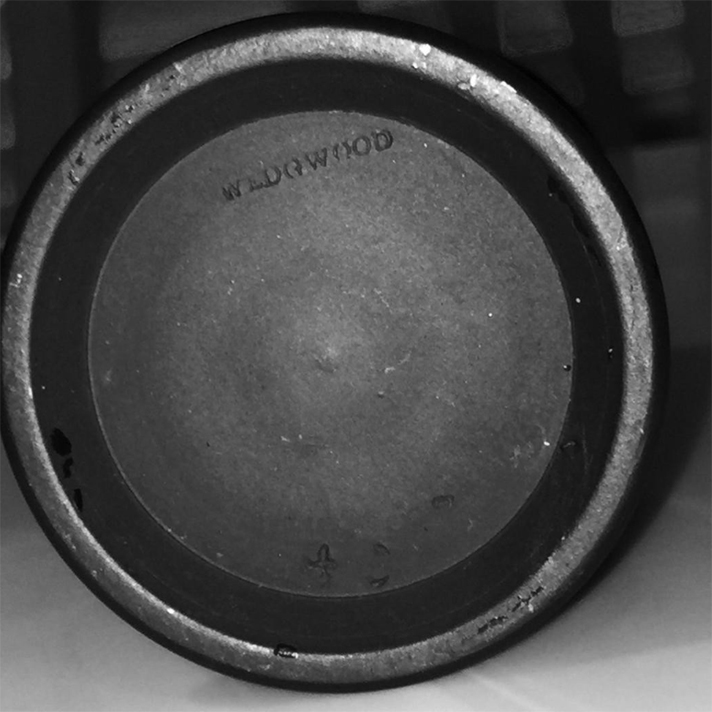
Black Basalt differed from Egyptian Black in that it was smoother in texture, finer in grain, and richer in hue.
Image courtesy of: WorthPoint
Still in production today, Wedgwood said of his Black Basalt body, “Black is Sterling and will last forever”.


